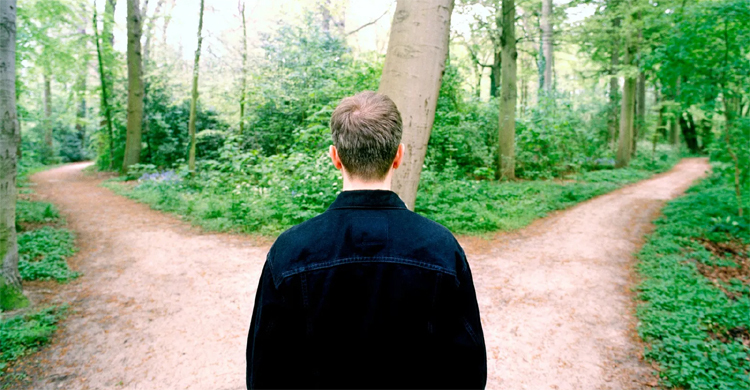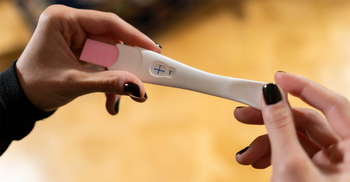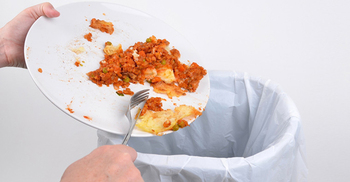Why indecision makes you smarter

In the TV series The Good Place, the character Chidi Anagonye is defined by his inability to make even the simplest of decisions – from choosing what to eat, to proclaiming love for his soulmate. The very idea of making a choice often results in a serious stomach-ache. He is stuck in continued ‘analysis paralysis’.
We meet Chidi in the afterlife, and learn that his indecisiveness was the cause of his death. While standing in the street, endlessly equivocating on which bar to visit with his best friend, an air-conditioning unit from the apartment above falls on his head, killing him instantly.
“You know the sound that a fork makes in the garbage disposal? That's the sound my brain makes all the time,” he says in one episode. And besides making himself unhappy, Chidi’s lack of confidence in his own judgements drives the people around him crazy.
If that sounds like an exaggerated version of you, then you are not alone: indecisiveness is a common trait. While some people come to very quick judgements, others struggle to weigh up the options – and may even try to avoid making a choice at all.
As Chidi shows, indecisiveness can be linked to problems like anxiety, yet recent research suggests that it can also have an upside – it protects us from common cognitive errors like confirmation bias, so that when the person does finally come to a judgement, it is generally wiser than those who jumped to a conclusion too quickly. The trick is to learn when to wait, and when to break through the inertia while it’s holding you back.
The enemy of good
Psychologists have various tools to measure indecisiveness. One of the most common questionnaires – the Frost Indecisiveness Scale – asks participants to rate a series of statements on a scale of 1 (strongly disagree) to 5 (strongly agree). They include:
- I try to put off making decisions
- I have a hard time planning my free time
- I often worry about making the wrong choice
- It seems that deciding on the most trivial thing takes me a long time
Using this scale, psychologists have shown that indecisiveness is often a product of perfectionism. Perfectionists are scared of the shame or regret that may come with making the wrong choice – and so they put off making decisions until they feel certain they are doing the right thing. (And in some cases, of course, they simply never reach that level of confidence.)
The frustration this brings can be a barrier to happiness; in general, the higher someone scores on the scale above, the lower they will score on measures of life satisfaction, according to a study by Eric Rassin, a professor of psychology at Erasmus University, in the Netherlands. They are less likely to endorse statements such as “the conditions of my life are excellent”, for example, or “if I could live my life over, I would change almost nothing”.
Jumping to conclusions
From these results, indecisiveness would seem like a wholly undesirable trait. Recent research, however, suggests that the struggle to come to a quick conclusion – as uncomfortable as it may be – can also have an upside, since it protects people from some important cognitive biases.
Evidence for these benefits comes from a recent paper by Jana-Maria Hohnsbehn, a doctoral researcher, and Iris Schneider, a professor of social psychology, at the TU Dresden (Technische Universität Dresden).
Rather than using the Frost Indecisiveness Scale, Hohnsbehn and Schneider focused on a measure of “trait ambivalence”, which looks more specifically at the thoughts and feelings underlying someone’s judgement and decision-making (or lack thereof). For example, people are asked to rate statements such as:
My thoughts are often contradictory
I often feel torn between two sides of an issue
Sometimes when I think about a topic, it almost feels like I am physically switching from side to side
“If these statements resonate with us, then we are probably high in trait ambivalence,” says Hohnsbehn.
As you might expect, those high in trait ambivalence take a longer time to make decisions. But Hohnsbehn and Schneider found that they are also less prone to bias when coming to their judgements.
For example, in one experiment, she asked her participants to read a series of scenarios, such as:
You meet a person, and you would like to find out whether he/she is an introvert or extrovert. You guess that the person is an extrovert. Which of the following two questions would you ask?
- Do you like spending time at home alone?
- Do you like going to parties?
Many people pick the second question, but this is a sign of confirmation bias – you are only looking for the information that agrees with your assumption, rather than looking for evidence that you may be wrong. Hohnsbehn and her colleagues found that people with high trait ambivalence were less likely to do this. Instead, they chose to interrogate their assumption, in order to make sure they had the information they needed to come to a correct answer.
For another experiment, the participants read about an employee, Mr Müller, who was seeking to get his contract renewed. After making a preliminary decision about whether to allow Mr Müller to continue in the role, the participants were given some additional statements, which were ostensibly from industry experts about Mr Müller. Some of these statements agreed with the participants’ initial decisions, while others disagreed.
The participants’ task was to rate the credibility and importance of each one. Hohnsbehn and Schneider found that the people scoring high on ambivalence tended to be more open-minded to the statements that disagreed with their initial point of view, and rated them more highly for their credibility and importance – whereas those who showed little trait ambivalence were more likely to discount them.
These findings are important, since confirmation bias is one of our most common cognitive errors, preventing us from analysing evidence rationally in everything from our personal relationships to our political views. Trait ambivalence helps protect us from this kind of oversimplistic thinking – and may also help us with other forms, too.
Studies by Schneider, for instance, suggest that people with high trait ambivalence are also less prone to “correspondence bias”, which is a tendency to ignore the context of someone’s behaviour and to instead attribute any failures and successes directly to the person themselves. To give a straightforward example: if someone slips over, correspondence bias might lead us to conclude that they are inherently clumsy (an internal factor), rather than recognising the slipperiness of the floor (an external factor).
Correspondence bias might also lead us to assume that someone struggling in their education simply lacks intelligence, rather than considering the strains of their financial difficulties or their responsibilities within the family. People with high trait ambivalence are more likely to recognise those other factors than people who form quick and confident judgements.
Action over inaction
Hohnsbehn’s research should be good news if you’ve ever felt impatient with your inability to come to a quick decision. “The general experience of being ambivalent needs to be embraced,” she suggests. “It can give us necessary pause, signalling to us that things are complex and that we need more time to engage in more careful thought about our decision.”
It is only when this becomes excessive that we face problems. “As with most things, there is a balance that needs to be struck,” adds Hohnsbehn. That might explain why indecisive people often score lower on those measures of life satisfaction – their ambivalence, when facing important choices, has become overwhelming.
One simple step might be to set a time limit for your final decision so that you do not spend too much time ruminating on the different options without actually gaining any new insights. Depending on the type of problem you are facing, Hohnsbehn suggests you might even consider turning it into a series of tasks – such as devoting two hours to the search for new information, for example, before spending a certain amount of time deliberating.
If you still feel paralysed, you might find inspiration in a study by Steven Levitt, an economist at the University of Chicago, which examined people’s overall happiness after making important life changes.
Levitt, who is a co-author of the book Freakonomics, set up a website where people described various dilemmas they were facing in their lives – from getting a tattoo to moving house, returning to education or quitting their jobs. The participants were then asked to flip a coin, the outcome of which would tell them whether or not to make the change.
Following up with the participants over the following months, Levitt found many people had taken the plunge; if the coin toss had told them to take action, they were more likely to make the life change. And they reported being significantly happier than those who had simply carried on as before (regardless of whether the coin had told them to or not), without quitting, moving or getting that tattoo.
We can guess that, before the study, most of these participants had already been thinking carefully about the situation at hand, but their worries about making the wrong choice had prevented them from taking the plunge. The coin had simply acted as a small nudge to finally overcome their ambivalence.
The moral of the study, then, is not that we should make all decisions on the whim of a tossed coin. It is that breaking through your hesitancy and doubt will leave you happier than you might imagine. “A good rule of thumb in decision making is, whenever you cannot decide what you should do, choose the action that represents a change, rather than continuing the status quo,” concluded Levitt.
Like Chidi in The Good Place, we can weigh up all the pros and cons of every situation – and that ambivalence will help us to make wiser choices. Once that ambivalent thinking has served its purpose, however, you must learn to cast it aside – safe in the knowledge that any decision is often better than making no choice at all.
Source: BBC







